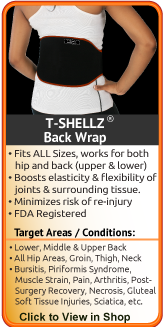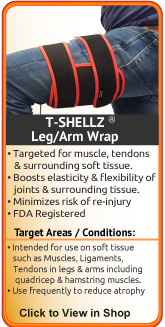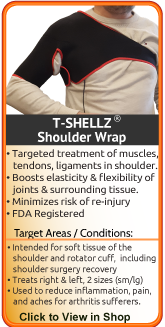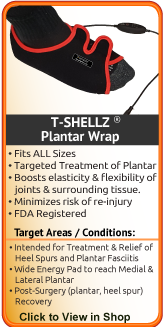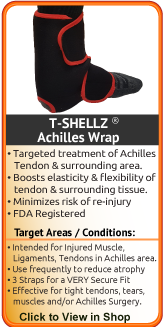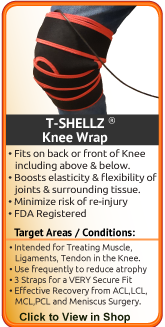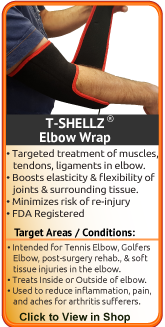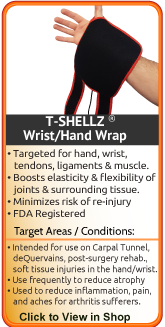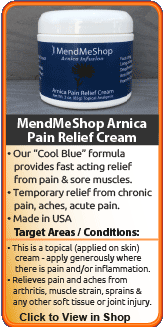|
|
Common Symptoms of Groin Strain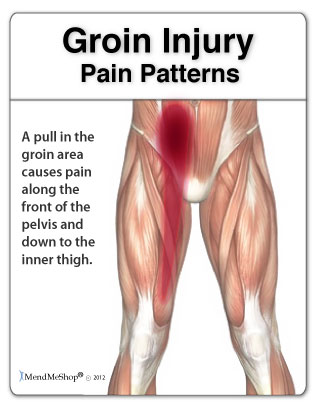 A sharp pain may be felt in your groin and inner thigh area if you are suffering from a groin / hip pull or strain. You will feel tightness, tenderness and/or muscle spasms when you try to move your groin muscles. Movements you previously took for granted throughout your day become painful and even impossible, such as getting into a car seat. Attempts to try and move your legs or extend / rotate your hip or leg inward can immediately trigger a lot of pain. You may feel tenderness in the inside of your thigh, especially when you touch/prod the area. Pain may also radiate further down your inner thigh. If you have a chronic injury, you may feel more of a dull ache that lasts for long periods of time. This pain can happen in one area or multiple areas at one time. You will likely experience stiffness and a decreased range of motion (ROM) in the area as a result of a pulled groin - this will make it difficult to bend and rotate your hip and knee. To test your stiffness and ROM, sit on the floor and put the soles of your feet together. If you have tightness, pain and/or tenderness while doing this, you are likely suffering from a damage to one or more of your hip flexor muscles. You may also feel tightness in your lower abdominal, spine, hip and thigh region. You may also feel pain if you lay down on your back and raise your heels just a slight 15 degrees off the ground.
How Long for a Groin Strain to Heal?This is a popular question, but the short answer is that it depends on the grade of strain as well as the age of the person, the type of treatment they receive and their overall health. When considering all factors, a the healing time for a groin strain can range between a couple of days and four to five months. See directly below for a detailed analysis on deltoid strain grades and the accompanying general healing time estimates. Three Grades of Groin Strain SeverityThis can be classified into 3 grades of groin pull or strain severity: 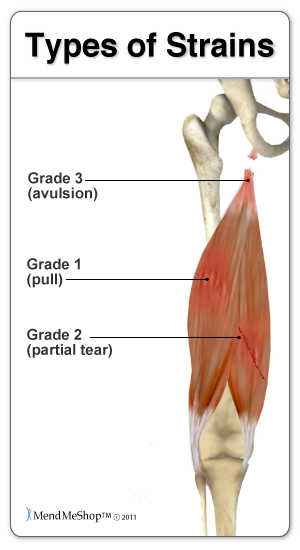 Minor - Grade 1 Groin PullA grade 1 groin pull means you have slightly pulled muscles or very small tears in these muscles. You will generally feel mild cramping which will be a little tender or uncomfortable, but will involve little swelling or loss of strength. If you are resting and careful with activity, a grade 1 groin pull should clear up within a couple of days to a week or so. Moderate - Grade 2 Groin PullGrade 2 pulls are more severe and painful than a grade 1 pull. This will involve a partial tearing of the groin fibers in your muscle, tendon, or where the tendon attaches to bone. You will generally experience pain, along with swelling, decreased range of motion and strength, as well as difficulty walking or running. With a Grade 2 groin strain, your groin muscles will often be painful to the touch. Recovery from a Grade 2 groin strain should occur within about 4 to 6 weeks as long as you are resting and careful not to overdo it. Severe - Grade 3 Groin PullSevere groin pulls involve a complete tear (rupture) of groin muscle fibers - usually where the muscle meets tendon or where the tendon attaches to bone. A grade 3 Strain/Pull is very painful and less frequent than the others. You will tend to experience a burning or stabbing pain, a lot of swelling and significant loss of strength. This may prevent you from walking without assistance and likely make it impossible for you to run. Bruising in the injured area is common a few days after the accident. This type of pull or strain will likely require a surgical repair as there is complete detachment. Post surgical recovery generally takes 6 weeks to 3 or 4 months; the recovery time will depend on many factors, some of them being age, overall health, and the level of adherence to post-surgery conservative treatments prescribed by your surgeon/physician. [ie. physiotherapy, prescribed range of motion stretches, cold compression (for inflammation), etc.] If you are experiencing a grade 2 or higher groin strain, you may be interested in reading through our conservative treatments for groin strain page.Causes of a Strained GroinHip and groin pulls are among the most common of any injuries that occur in the hip and groin. When it comes to sports related injuries:
Those that participate in sports yet embody poor motion mechanics are more susceptible to muscle and tendon strain as a whole. Poor mechanics in running sports specifically would make a person more vulnerable to hip, leg, lower back, groin, knee, ankle and foot related strain/sprain injuries. Unless the mechanics are corrected, the injuries will most likely persist and become chronic (long term); eventually, the injury may affect gait (the way you walk) permanently. Outside of sports,
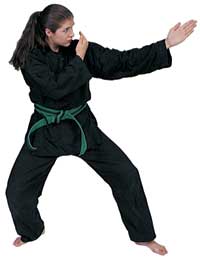 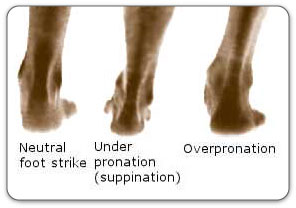 Overstretching, Overloading & OveruseThis occurs often for "weekend warriors" or sometimes in athletes - especially when training competitively for the high risk sports (listed above), and/or in swimming when using a "swimming breaststroke" (whip kick) on a regular basis. The chances for injury are increased when the person has not warmed-up and/or stretched properfly beforehand. Without proper stretching and warm-up, muscles just aren't ready for the added stress. You are at further risk of a strain or pull if you are performing these activities in cold temperature or if are tired. Diagnosing a Groin or Hip StrainTo help your doctor give you a diagnosis, he/she will begin with your medical history, current condition and symptoms. He/she will ask how much pain you are having, if you heard a popping noise when you first experienced your injury. They will also ask how long you have had certain symptoms and the limitations you are experiencing. Details about what brought about your problem, when it started, and whether or not you have ever had treatments for this or a similar condition in the past, will be very helpful in assessing your injury. A physical examination done by your doctor will look and feel the muscles, bones and other soft tissue in and around your hip, torso and thigh to identify pain, tenderness and non-symmetric variance (ie. the inside of your left thigh is more swollen than the inside of the right thigh). This will help the physician discover abnormalities, such as mild or severe inflammation, fluid, bruising, bone or tissue deformity, and leg length discrepancies. He/she may ask you to complete a series of flexing and extending leg movements to see what motions cause pain, weakness, tightness, or instability. Your doctor will also likely test for the grade of muscle strain and try to identify any muscle imbalances. Generally with a strain you will experience resisted extension and pain, where as with a tear you will not be able to complete a specific request (such as raising your feet while lying on your back). They physician may also evaluate your feet and gait (the way you walk) to determine if you overpronate, or have other alignment issues. Most Common Quadriceps Injury Diagnostic Tests: 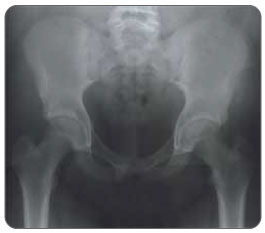 Most grade 1 or 2 strains don't require diagnostic testing but the physician may opt for one anyway if they are finding the severity difficult to determine. This difficuly is due to swelling and bleeding that can occur deep within the muscle, and many muscles in this area are deep. X-rays will provide a two-dimensional image of the overall structure of your upper leg (pelvis, femur and knee). They are helpful in pointing out instability, fractures, abnormal bone shapes (bone spurs, calcifications or cysts, joint degeneration), and/or other hip and groin problems. 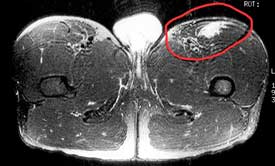 MRIs (magnetic resonance imaging) will provide more detailed information and will help to see the soft tissues in and around your area of injury (muscles, tendons, ligaments, fascia, and other connective tissues). The accuracy of an MRI will most likely provide your doctor with plenty of information to determine the grade of your thigh muscle tear. The MRI will also determine if there is additional ligament or tendon damage, inflammation, tendinopathies and many other associated conditions. Should you seek medical attention?This is up to your discretion; however any continued discomfort in your thigh area should be investigated. If you continue to experience the thigh muscle related injury symptoms and have tried the suggested conservative treatments for 2 -3 weeks, it is recommended that you seek professional medical attention. It is recommended you seek immediate attention if you:
Preventing Groin StrainsIt is always better to prevent injuries rather than try to fix them after they happen, however that is not always the situation. A thigh muscle strain can be difficult to prevent as your major symptoms may start long after you've had the condition. In any case, there are a number of things you can do to keep yourself healthy and prevent further damage. 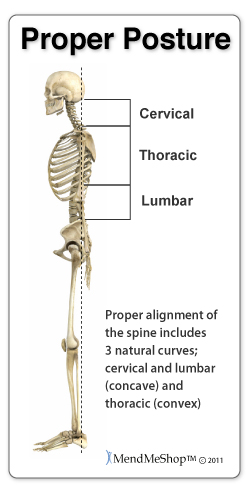 Maintain a strong and proper posture, and wear proper footwear and gear for your activity. This will ensure your body is properly aligned, and will prevent against slouching or bad form which will make you more prone to injury. Your equipment should be comfortable and provide enough padding (knee or thigh pads), and your shoes should provide sufficient sole stiffness and arch support. Avoid doing too much to soon to give your body an opportunity to build up its endurance. This is especially important when participating in a new activity. Gradually increase your participation to prevent overstraining your muscles. Always warm up your muscles (especially your leg muscles) before working them to prepare your body and to raise your body temperature (15-20 minutes is the recommended time). Recovery from your activity can be enhanced by doing a cool down to lower your body temperature and relax your muscles.  To stabilize your thigh muscles, and increase your range of motion, maintain and build your strength, stability and flexibility of your quadriceps as well as your hamstrings, IT band, lower leg, gluteal, pelvis, low back and core body muscles. Light weights, exercise bands and balls are very beneficial for strengthening your lower body. Core balance training and exercises to develop strength, speed and agility, such as jumping or bounding movements (plyometrics). Yoga, tai chi, or a daily stretching routine will help to keep your muscles and joints supple - avoid sudden twisting and turning motions. A regular exercise program that focuses on total body fitness and includes low-impact aerobic activity at least 3 days per week, such as walking, swimming or biking will help to keep you healthy overall and will strengthen your body to prevent against further quadriceps injuries. Proper food and fluid intake prior to and/or during activities will ensure you have enough energy and will help to prevent against fatigue. Ensure you avoid dehydration which can lead to muscle cramping. Weight loss and/or weight maintenance involves eating a balanced diet full of protein, complex carbohydrates, fats, vitamins, minerals, phytochemicals and antioxidants which will help support a healthy system. If you gain just 10 pounds, your joints must bear from 25 up to 100 pounds extra, which can add unnecessary stress to your body. Limiting your caffeine, alcohol and nicotine consumption will also improve your health. Learn More About Muscle Injuries & TreatmentsI want to learn more about Post-Surgery Recovery I want to learn more about muscle injury home treatment using the TShellz Wrap® I want to learn more about Ice & Heat: Which Is Better For Muscle Strains/Spasms? Do I Need Muscle Surgery?
|


